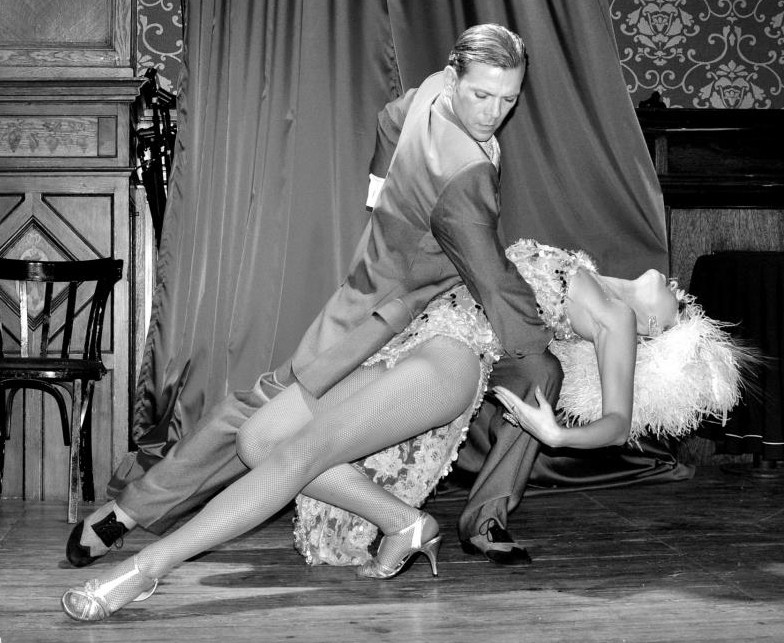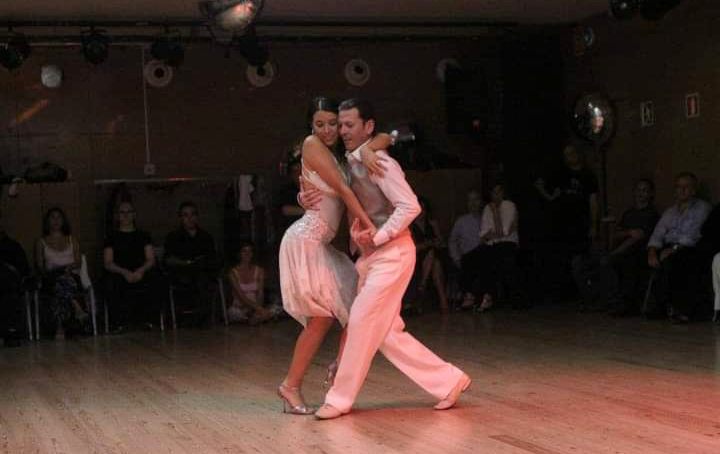If inclusion can be defined as an embracing response to diversity, as an acceptance and integration of different backgrounds and histories into a whole, then Tango is undoubtedly an inclusive art form. Tango emerged from diverse roots as popular art that suffered, endured, and reinvented itself. It has toured cities worldwide with very different cultures and customs, reaching the peak of success and popularity it enjoys today.

How it was conceived
In its origins, back in 1860, Tango was a hybrid initially influenced by the African candombe -the carnival dance of slaves’ descendants-, and the Cuban habanera. The compadrito (popular young man) imitated its contortionist movements that became today's corte (stop the movement) and quebrada (break the bodyline).
Immigrants, coming mainly from Europe, arrived with few resources, so they were forced to settle in conventillos. These conventillos were large houses with a central courtyard surrounded by rooms. Entire families occupied each room. The patio was the meeting place where these families danced, each making their cultural and linguistic contributions.
They sought to bond through harmonious coexistence not only with the native inhabitants, the Afro-Argentine descendants of slaves, but also with the distant families of the bourgeoisie.
Tango emerged naturally and spontaneously as a way of being and feeling that responded to the need for freedom and creative expression. It grasped the resources it found at hand such as the candombe and habanera mentioned above; it used the German bandoneón, the Andalusian Tango, and the milonga pampeana. Thus it shaped an identity based on human connection, not only through movement, but also through language.
Immigrants usually enhanced their limited knowledge of Spanish with words from their mother tongues. As a result, lunfardo was born, which became the language of Tango, a kind of Spanish strongly influenced by words coming from foreign languages, mainly Italian. Hence, words like facha, which refers to physical appearance, comes from the Italian faccia, which means face.
Tango was censored simply for attempting to generate a connection and supportive relationships between peers from different countries who had escaped from wars and tragic personal stories to reach the port of Buenos Aires and Montevideo in search of better life opportunities.
A part of society related Tango and lunfardo with the peripheral, the immoral, the forbidden, the obscure, while the other part embraced it as their own because it was a meeting place for different ethnic and social groups, languages, and cultures.
This racial and socio-cultural mix gave birth to this dance that, curiously enough unlike some other dance forms, is defined first as a form of movement and then by its musical accompaniment.
Today the dance, its music, and its poetry travel the world.

Why Tango attracts more people every day
This art, born in the Rio de la Plata, does not represent a passing entertainment. Its underlying elements appeal to our very bones, to our deepest human emotions.
For Tango lovers, stepping on a dance floor, attending a class or a Tango show is much more than a distraction or a hobby. Those who engage with Tango in any of its expressions seek to continue cultivating themselves by experimenting with feelings and different perceptions of life.
Attending a group class or a milonga is a decision to share the space and surrender to the embrace of people known or unknown. It seeks connection through dance regardless of ideology, ethnicity, profession, age, or sexual condition. It is an attempt to discover what generates a particular interpretation of the dance that is unique and unrepeatable as the couple itself.

It takes two to Tango
Tango does not work if it is not in a pair, functioning as a single body linked on the dance floor. In the past, the roles were well marked, that of the man and the woman. However, today tango is facing a new reality, in which the tendency is to give freedom to each member to choose the role with which he/she feels identified. Ergo, there are already those who speak of roles of leader and follower instead of man and woman.
One gets to know the other through the embrace: the couple feels each other's energies, needs, and insecurities. And they get to know each other much better if they let their emotional instinct lead them away from Tango as a rational structure, and allow it to manifest itself freely and fluidly. The other is the necessary complement, the other half of this bodily dialogue between the leader and the follower. It is a dance of action and reaction, a predisposition to physical listening and the couple mutual surrender.
At the roots of Tango is the search for acceptance, a way of feeling truly oneself without censorship or prejudice, free in an unknown land.
We could define Tango as a way of perceiving life, inspired by emotions, trust, acceptance, bonding, containment, creation, struggle, respect, uprooting, and freedom.
Tango is an authentic and spontaneous embrace of the other.
About the author
Alejandro Figliolo is a tango dancer, choreographer and instructor, President of the “Fundación Cultura y Arte Popular.” He finished his studies at the former Tango University, now CETBA in Buenos Aires. He performed in Avenida Corrientes theaters, in Buenos Aires and travelled wordwide with different tango companies.
Facebook (https://www.facebook.com/alejandro.figlio)
YouTube (https://www.youtube.com/channel/UCoBuio7OFsdrJqHNWCe7p6w)